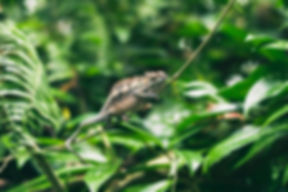

The Mangrove Project Overview
Welcome to The Mangrove Project (TMP). TMP provides people with the opportunity to purchase carbon offsets for the emissions generated by air or automotive travel by purchasing and planting mangrove trees.
We are collaborating with the great team at Alternative Travel Cartagena who are coordinating the planting efforts. The money generated by the carbon offsets will provide economic opportunity for the people living and working in the fishing community of La Boquilla, Colombia which is just north of the city of Cartagena. TMP focuses on mangroves because mangroves are like super trees. They absorb 5x as much CO2 as other trees.
What is the process?
The first step is calculating the amount of emissions created by your travel based on the miles and methods by which you traveled. Once we know how much carbon you’ve emitted, we can then calculate how many mangrove trees are needed to offset your emissions. We contact Alternative Travel Cartagena to organize seed gathering, germination and planting. Local fishermen will then go gather the mangrove seeds and put them in bags to germinate. After three to four weeks, the seedlings will be ready to be planted. The fisherman will take the seedlings out to fertile land to grow the new mangroves. Once your tree has been planted by the local fisherman, you will receive an image and video of the planted seedlings to see they have actually been planted.
How much does it cost and where does the money go?
Each mangrove tree costs $6.50 USD per tree. All of the money goes straight to the fisherman who collect the seeds, prepare them for germination and plant them. There are no transaction fees for “middle-men/women.” For reference, the minimum wage for a Colombian is $242/month. Our first cycle of planting is 40 trees or $260.
This is a risk-free process. You pay us, and we pay them. If for some reason something goes wrong in the process, we will pay you back all of your money. No questions asked.
Background and history of La Boquilla, Colombia
La Boquilla is a community just north of Cartagena, Colombia where more than 10,000 people live in an area of 2.7 square kilometers. Most of the people are Afro-Colombian, and many of them came to La Boquilla because they were displaced from other towns in Colombia due to the country's civil war.
The mangroves are a major part of this Afro Caribbean community’s culture and way of life. In the face of significant condo and hotel building that began in the 1990s, the La Boquilla community found a way to maintain their culture by sharing the beauty and experience in the for mangroves with visitors–and creating economic opportunities for the people.
La Boquilla has a rich cultural heritage that has developed since the ancestors of today’s residents first settled the area more than 250 years ago. It was first settled in the 18th century by runaway slaves who set up camps known as palenques in the swamps. The fishing and handicrafts that started in La Boquilla centuries ago and have been handed down for generations have been under pressure. International conglomerates have sought to fill in the wetlands for the construction of expensive resorts and apartment buildings.
What are carbon (CO2) offsets?
Carbon offsets are a way for people to pay for the amount of carbon emissions that your travel generated. These emissions are created when traveling in planes or other vehicles that burn fossil fuels. .
Why mangroves?
Mangroves are trees that live in tropical conditions that grow in brackish waters. Many of these trees can be found in places near the equator including Florida, Australia, Brazil, Indonesia, and Colombia! These special trees are able to store large amounts of carbon, almost 5 times the amount of other trees. They also provide protection from natural disasters and help to remove pollutants from their surrounding waters.
How do you calculate how many trees need to be planted?
We use calculators online that will calculate the amount of emissions generated by your travel. We then calculate the amount of mangrove trees that need to be planted to offset those emissions. The calculation is based on the amount of CO2 one mangrove tree will absorb throughout its life span which averages 25 years. Research suggests that each mangrove tree offsets 12.3 kg of CO2 per tree per year, therefore over 25 years that is the equivalent of 307.7 kg of CO2.

